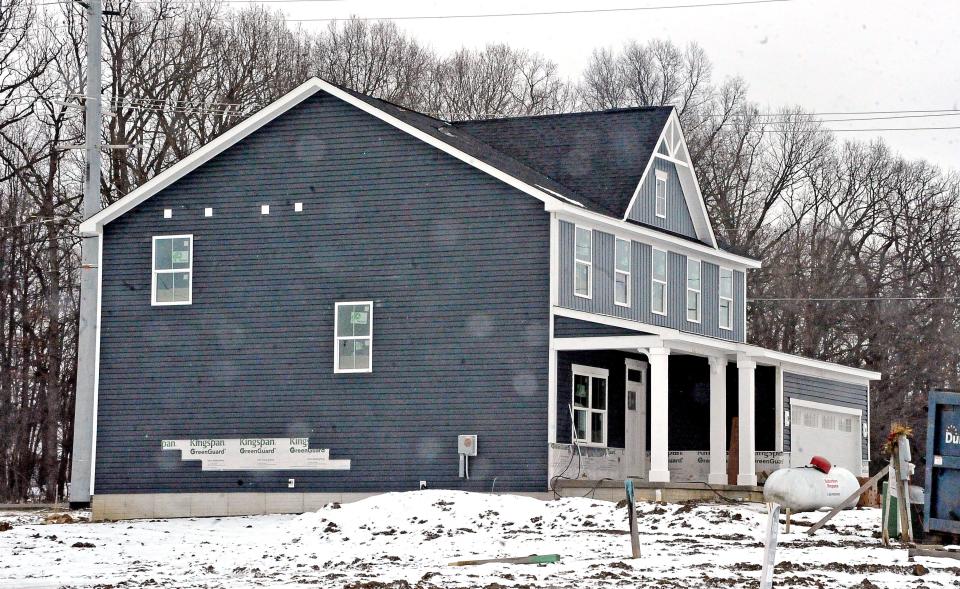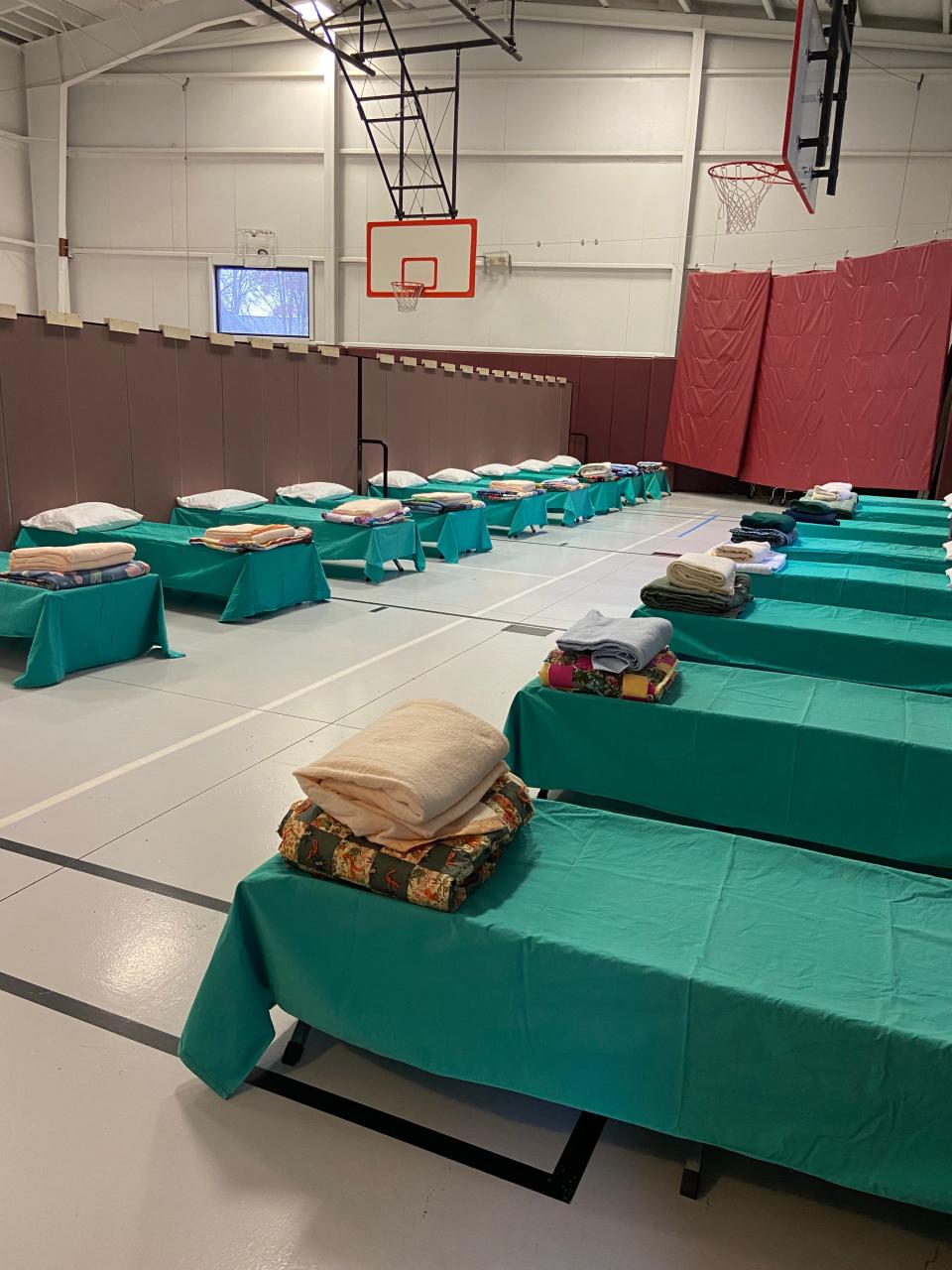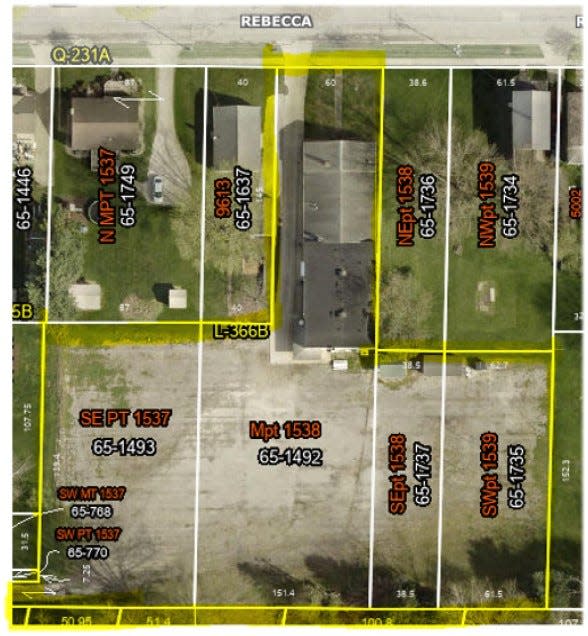Wayne County's housing shortage: 'Where will the Meijer and Gojo employees live?'
Note: This story was updated to fix errors. See correction at bottom of story.

WOOSTER − Nearly 225 people packed into First Presbyterian Church on Feb. 9 for the second community meeting on housing and homelessness.
Sponsored by the Wooster Homelessness Task Force, The Wayne County Housing Coalition, The League of Women Voters and the Reentry Coalition of Wayne-Holmes, the Thursday gathering was a follow-up to a meeting that took place one year ago.
Housing squeeze:Voucher assistance becomes another barrier as rent prices rise
The event included speakers from the task force and the housing coalition. They discussed the problems facing a growing homeless population and a shrinking housing market.
"It stems from a community desire to do something and help concerned citizens get involved," said James Fox, President of Community Action Wayne/Medina.
Another aim is to help individuals see housing and homelessness from a different perspective.
Homelessness on the rise
Homelessness is still trending across the country despite a 10% decrease from 2007 to 2022.
The Ohio Balance of State Continuum of Care, which includes nearly all of the state's rural counties, including Wayne, reported this trend in rural Ohio.
Homelessness:'We are all part of the solution' — Wayne County community tackles homelessness
Wayne County has roughly 117 people living in shelters or on the streets, according to a recent point-in-time count. That's more than the 107 counted in 2022 and less than the 140 in 2019.
Since 2018, the number of unhoused people has risen nationally from 552,830 to 582,446, according to data from the Coalition on Homelessness and Housing in Ohio.
The coalition found that 580,000 people experienced at least one homeless night last year.
Understanding from a different perspective

Coupled with an unsheltered population is an affordable housing shortage that leaves few options for people living paycheck to paycheck, Fox said.
One solution is housing assistance voucher programs, however not everyone qualifies, leaving some to fall through the cracks. There is also a shortage of housing that accepts such vouchers.
Housing in Wooster:Wooster council OKs expansion of manufactured homes in existing mobile home parks
"Landlords don't always work with organizations to allow for affordable housing," Fox said. This prevents properties from participating in voucher programs.
Not all wages kept up with rising rents since 2020, leaving many households burdened by the cost of rent.
The Joint Center for Housing Studies through Harvard University defines rent burden as a household paying more than 30% of its income on housing. Severely rent-burdened households pay more than 50%.
Fox said some Wayne County households have 80% of their income going toward rent.
Affordable housing gap

Ashland, Lorain, Medina and Wayne counties rank No. 4 out of the 17 regions across the state for the greatest need for permanent supportive housing vouchers, according to COHHIO.
To fill in the gaps, Fox said, more landlords should work with organizations to provide affordable housing via voucher and rental assistant programs.
"We're coming to a critical juncture in the coming months," he said. "Where will the Meijer and Gojo employees live?"
Housing developments like the 91 single-family homes on Oak Hill Road will help free up some housing, but there should be more affordable and subsidized housing, he said.
More affordable housing was in the works with a 320-unit apartment complex along Oldman Road, but the developer withdrew citing rising inflation and construction costs, according to the city of Wooster.
While this is a setback, the city said, a 141-unit apartment development will be built along Melrose Drive.
Transitional housing

Another gap Fox cited is transitional housing and permanent supportive housing, which would allow individuals to find stability.
Wayne County, for its size, he said, is unparalleled in its collaboration and programs available, but there is a missing link.
Using domestic violence as an example, Fox explained there are limited options to transition families and individuals from those shelters into permanent supportive housing.
One such development proposed for Rebecca Street was met with local resistance, he said. The site would include six attached single-family dwellings with 12 units.
"(Not in my backyard) is a national issue, and if we're brutally honest with ourselves, I think we all have a little of this," Fox said. "People work hard to live in a space they feel safe."
Not all supportive housing will lower property values and increase crime, he said.
"We're talking five or six duplexes that have oversight and support for each resident," said Fox.
An example of successful permanent supportive housing is the Counseling Center's Orchard Court Apartments on Benden Drive, he said.
Getting involved
The Wayne County Housing Coalition's 10-year plan to end homelessness includes count and point data to identify housing and service needs while focusing on the most at-risk populations.
It also aims to fill in service gaps by continuing to work with local nonprofits, social service agencies and the College of Wooster.
For this to work, local residents should consider volunteering at the Severe Weather Shelter and other agencies and advocate for affordable housing, Fox said.
"If you have a little extra money, consider becoming a landlord who supports housing continuum of care programs," he said.
To learn more, visit the websites and/or social media pages of the Wooster Homelessness Task Force, the Wayne County Housing Coalition, the League of Women Voters and the Reentry Coalition of Wayne-Holmes.
Correction: The League of Women Voters, The Wayne County Housing Coalition, Wooster Homelessness Task Force and the Reentry Coalition of Wayne-Holmes were the sponsors of a recent community meeting on housing and homelessness. Also, no one from the Reentry Coalition spoke at the event, however representatives were available for questions. Some of the sponsors were inadvertently omitted when this story first published Feb. 13.
This article originally appeared on The Daily Record: Agencies take aim at affordable housing shortage in Wayne County

